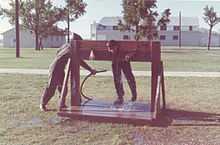First solo flight
The first solo flight of a new pilot comprises that pilot completing a take off, and usually a short flight and safe landing, by him or herself. Flying such a flight is a milestone known as soloing.
Requirements
Depending on the country, there may be a requirement for some minimum number of training hours to have been completed by the student pilot before he or she is allowed to solo. In most countries, it is assumed that such students will be familiar with (and may have to pass an examination on) the relevant Air Laws or Regulations, and will have completed exercises in handling aircraft in normal conditions, and also what to do in the case of engine failure on takeoff, in flight, and before landing.

In the USA, for most aircraft, there is no FAA (Federal Aviation Administration) requirement for a minimum number of hours. Per FAR Part 61 SFAR 73 section 2, Robinson helicopters have a 20 hour requirement to solo. However the regulations do require that a student pilot show competency in several specific skills to include, for example, the ability to forward slip.[1] In practice, competence is mostly a judgment call of the Certificated Flight Instructor (CFI) responsible for the student. Typically, it takes from 10 to 30 hours of flight time before a pilot has the instinctive feel of an aircraft to be safe flying solo in other than perfect (no wind) weather.

Soloing
In some cases, when the student is given permission to fly alone the instructor directs the student to fly three circuits of the traffic pattern each accompanied by a full stop landing.[1] During the first circuit, the solo, the student's Flight instructor may supervise the student's performance from the ground, paying close attention to the approach and landing. Some instructors keep a radio handy, if there is one in the aircraft, in case the student pilot should need assistance or advice.[1]
Traditions
Several traditions have developed in the USA around "soloing", including drenching the student with water and cutting off and permanently displaying the back of his or her shirt.
In American aviation lore, the traditional removal of a new pilot's shirt tail is a sign of the instructor's new confidence in his student after successful completion of the first solo flight. In the days of tandem trainers, the student sat in the front seat, with the instructor behind. As there were often no radios in these early days of aviation, the instructor would tug on the student pilot's shirttail to get his attention, and then yell in his ear. A successful first solo flight is an indication that the student can fly without the instructor ("instructor-less" flight). Hence, there is no longer a need for the shirt tail, and it is cut off by the (often) proud instructor, and sometimes displayed as a trophy.[2]